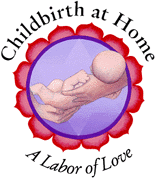
SEE ALSO: Locating a Midwife in California| The Laws: Licensed Midwifery and Nurse-Midwifery Practice in California| The Southern California Midwifery Scene: Events, Workshops, Classes|
Roads Into the Profession of Midwifery
by Cordelia S. Hanna, BA, CCE, CBA
| Introduction | The Nurse-Midwifery Route | The Direct-Entry Route |The Certified Midwife Route |
--From a 16th Century Midwifery Text
Introduction
One of the oldest professions in the world is midwifery. Since the dawn of time, across all cultures, there have been women who have learned the art and skill of delivering babies from experienced women. Even in the 21st century, midwives continue to deliver the majority of the world's babies, and childbirth at home is the most common setting for birth. In Western Europe and other technolgically advanced countries, midwives attend the majority of births in the hospital setting. wherever midwives work, the research shows that outcomes for mothers and babies is superior. According to the World Health Organization, the developed countries that utilize midwives for the majority of their births have the lowest rates of cesearean section and maternal and infant mortality. Furthermore, midwifery saves society money. According to Dr. Frank Oski, M.D., Professor and Director, Department of Pediatrics, Johns Hopkins University School of Medicine, "Between $13 and $20 billion dollars per year could be saved in health care costs by developing midwifery care, demedicalizing childbirth and encouraging breastfeeding."
Midwives Are Attending More Births
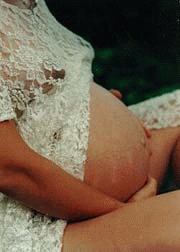 The word "midwife" sounds archaic to most people in the United States today. The resurgence of birth with midwives grew out of the early 1970's "Back to Nature Movement", the strength of this grassroots movement is evidenced in the steady numbers of people who have chosen midwifery care over thirty years. In recent years, midwife-attended births has increased. Midwives attended 5.5 percent of all live births in 1994, an increase from 4.8 percent in 1993. In 1975, only one percent of all births were attended by midwives. Certified Nurse-Midwives attended close to five percent of hospital births. This represents a gain over 1993 and an increase of more than 30% since 1991. In 1994 , the out-of hospital birth rate was unchanged from 1975: One percent. Sixty-two percent (20,556) of out-of-hospital births were at home. 29 percent (11, 194) were in freestanding birth centers. (National Center for Health Statistics, 1996:44 (11S):15-16)
The word "midwife" sounds archaic to most people in the United States today. The resurgence of birth with midwives grew out of the early 1970's "Back to Nature Movement", the strength of this grassroots movement is evidenced in the steady numbers of people who have chosen midwifery care over thirty years. In recent years, midwife-attended births has increased. Midwives attended 5.5 percent of all live births in 1994, an increase from 4.8 percent in 1993. In 1975, only one percent of all births were attended by midwives. Certified Nurse-Midwives attended close to five percent of hospital births. This represents a gain over 1993 and an increase of more than 30% since 1991. In 1994 , the out-of hospital birth rate was unchanged from 1975: One percent. Sixty-two percent (20,556) of out-of-hospital births were at home. 29 percent (11, 194) were in freestanding birth centers. (National Center for Health Statistics, 1996:44 (11S):15-16)
Childbirth with midwives is not just an outmoded fad of the flower children of the counter-culture. In the 21st century, more hospitals are offering birth with midwives, and expectant parents are choosing alternative settings such as their own home or birthing centers, and these numbers are expected to increase as the positive results of midwife-assisted births are recognized.
In the United States today, there are two pathways into the midwifery profession: The Nurse-Midwifery Route and The Direct-Entry Route. Midwives offer care for pregnant women birthing at home, birth centers or in hospitals. For midwives who have out-of-hospital practices, hospital and doctor back-up is arranged in case the woman develops a complication, then consultation with, transfer of care or transport to physician becomes necessary. In the hospital setting, where most Certified Nurse Midwives practice, they work in under the supervision of obstetricians. Midwives also offer contraception, gynecological services and menopausal care to women.
To become a Certified Nurse Midwife (CNM) candidates must earn a Bachelor of Science in Nursing (BSN), then pass board of nursing examinations to become a Registered Nurse (RN). One to two years of experience working in 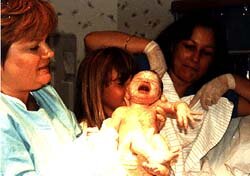 obstetrical nursing, women's gynecological care or labor and delivery in a hospital or clinic is required to be considered as a candidate for a nurse- midwifery program, which takes about a year to complete. Candidates may earn either a Master's or a Certificate. Master's degree programs require a Thesis; Certificate programs do not. The Master's degree may be required for teaching or positions of greater responsibility.
obstetrical nursing, women's gynecological care or labor and delivery in a hospital or clinic is required to be considered as a candidate for a nurse- midwifery program, which takes about a year to complete. Candidates may earn either a Master's or a Certificate. Master's degree programs require a Thesis; Certificate programs do not. The Master's degree may be required for teaching or positions of greater responsibility.
After completing the Nurse-Midwifery program, the candidate must pass the American College of Nurse Midwifery (ACNM) board examination to obtain certification. Most Certified Nurse Midwives work in hospital or clinical settings, some establish birth centers or home birth services. All work in consultation with obstetrician-gynecologists.
Alternate Avenues for Nurse-Midwifery Study
In Kentucky in the 1920's, Mary Breckinridge enlisted nurse-midwives to impact the crisis of maternal and fetal mortality in rural Appalachia. This background in both discliplines of nursing and midwifery was vital when caring for the impoverished pregnant women and children of this region who had a plethora of health and social problems.
These pioneer nurse-midwives were considered "unprofessional" when they rode on horseback because there were no roads, but they succeeded in lowering infant mortality to below national averages and gave birth to the modern nurse-midwifery profession. 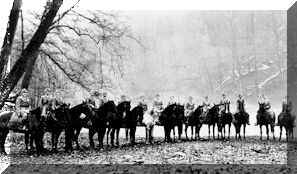 In 1939, The Frontier School of Midwifery and Family Nursing was established. Since 1982, The Community Based Nurse-Midwifery Education Program has been giving nurses who cannot relocate the opportunity to study from home. Registered Nurses who have bachelor's degrees may pace themselves through a mentored, two year program of study from a distance by use of personal computer, modem and fax. The clinical portion of the training can be set up locally with nurse-midwife preceptors.
In 1939, The Frontier School of Midwifery and Family Nursing was established. Since 1982, The Community Based Nurse-Midwifery Education Program has been giving nurses who cannot relocate the opportunity to study from home. Registered Nurses who have bachelor's degrees may pace themselves through a mentored, two year program of study from a distance by use of personal computer, modem and fax. The clinical portion of the training can be set up locally with nurse-midwife preceptors.
Certified Midwives The American College of Nurse-Midwives (ACNM) established a third option for aspiring midwives: The Certified Midwife (CM). Certified Midwives are individuals who have or receive a background in a health related field other than nursing and graduate from a midwifery education program accredited by the ACNM department of accrediadation. Graduates of an ACNM accredited midwifery education program take the same national certification examination as CNMs but receive the professional designation of Certified Midwife. CMs must attend a university-based program to become educated in the same core competencies for basic practice as CNMs, and practice in accord with the same standards for practice, philosophy, and code of ethics as nurse-midwives. Certified Midwives are relatively new professionals to the health care field but their education closely mirrors the education for Certified Nurse-Midwives. The mechanisms to educate and credential CMs were approved in 1994. CMs are not registered nurses (RNs), but may hold other professional designations as health care providers such as a Physician Assistant (PA) or Physical Therapist. (PT) Individuals choosing this career path will likely be pioneers in the profession, much like the early nurse-midwives who practiced in the U.S.
Currently, New York is the only state which recognizes the Certified Midwife credential or offers an educational program to become a Certified Midwife, although universities outside of New York state offering nurse-midwifery education may add this option to their programs of study in the years to come. Contact the ACNM for updates at www.acnm.org
The Direct-Entry Midwife enters the profession not through becoming a nurse first, but by self-directed study and experience, or apprenticeship with a senior midwife or doctor, or attendance at a Direct-Entry Midwifery Training Program.
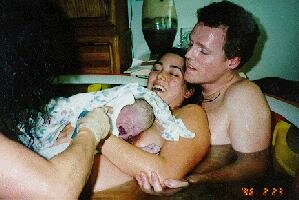 Many of today's "senior" direct-entry midwives entered the profession by having their own babies at home in the early 1970's and attending the births of friends and now have the experience of 20+ years and 1000's of births.
Many of today's "senior" direct-entry midwives entered the profession by having their own babies at home in the early 1970's and attending the births of friends and now have the experience of 20+ years and 1000's of births.
The North American Registry of Midwives (NARM) established a national certification procedure, where midwives who go through the process may become " Certified Professional Midwives" (CPMs). This "competency-based credential", recognizes midwives from all routes of education: apprenticeship, self-directed study, midwifery school, nursing programs, etc., who meet the criteria required for certification. Certified Professional Midwives are legal in some U.S. states, but not all. In California, the CPM is not a legal certification. California midwives who opt for legal recognition must meet the requirements of the California Midwifery Challenge Process established by Seattle Midwifery School and California Association of Midwives to become a Licensed Midwife (LMs). To find out the legal status of midwifery in your state, go to: The Midwives Alliance of North America's (MANA) Website.However, the absence of a license or certification does not necessarily mean that a midwife is incompetent. Likewise, the presence of a license or certification does not mean the midwife has the wisdom gained from years of practice. Many traditional or "lay" midwives (some who are"conciencious objectors" to licensure) have the good judgement that comes from years of experience, and they are as qualified as their colleagues who choose to obtain a license. Expectant parents are urged to select their midwife carefully; keeping in mind that experience level is more important than title. For more information, go to: "Questions to Ask When Choosing a Midwife"
The Future of Midwifery in the United States
Thirty years after the homebirth renaissance in America, protocols are being established for the education of direct-entry midwives, guidelines of practice, obtaining legal status, insurance and medicaid reimbursement, scientific research and education of the community and public health policy makers. (For more information, see The Pew Health Professions Commission report, "Charting A Course for the 21st Century: The Future of Midwifery," available from the University of California, San Francisco Center for Health Professions. Telephone: 415-476-8181 or go to: futurehealth.ucsf.edu)
The path that you choose to take to become a midwife is as personal as a woman's decision of where to have their baby. Nurse-Midwives are having a positive impact upon hospital births; many women feel secure giving birth in a hospital where emergency equipment, pain medication and medical doctors are readily available, yet want the quality, personalized care they receive from nurse-midwives. Yet, there will always be women who feel most comfortable giving birth outside the hospital, in their own homes or in birthing centers. Today's upcoming midwives have many opportunities for formalized training that our midwife-ancestors did not because of the trailblazing efforts of midwives who have tirelessly campaigned for legalization, trained apprentices, established schools, established protocols for practice and certification. The midwives of tomorrow will establish independent birth centers, deliver babies in homes and in hospitals, work in women's health care practices and become midwife-educators and public health policy-makers.
The future looks promising for the midwifery profession. As American women become aware of what midwives offer, more women will seek them out. Imagine a world where babies made their entry gently with awareness and love and all parents gave birth in the way that was the most empowering for them...